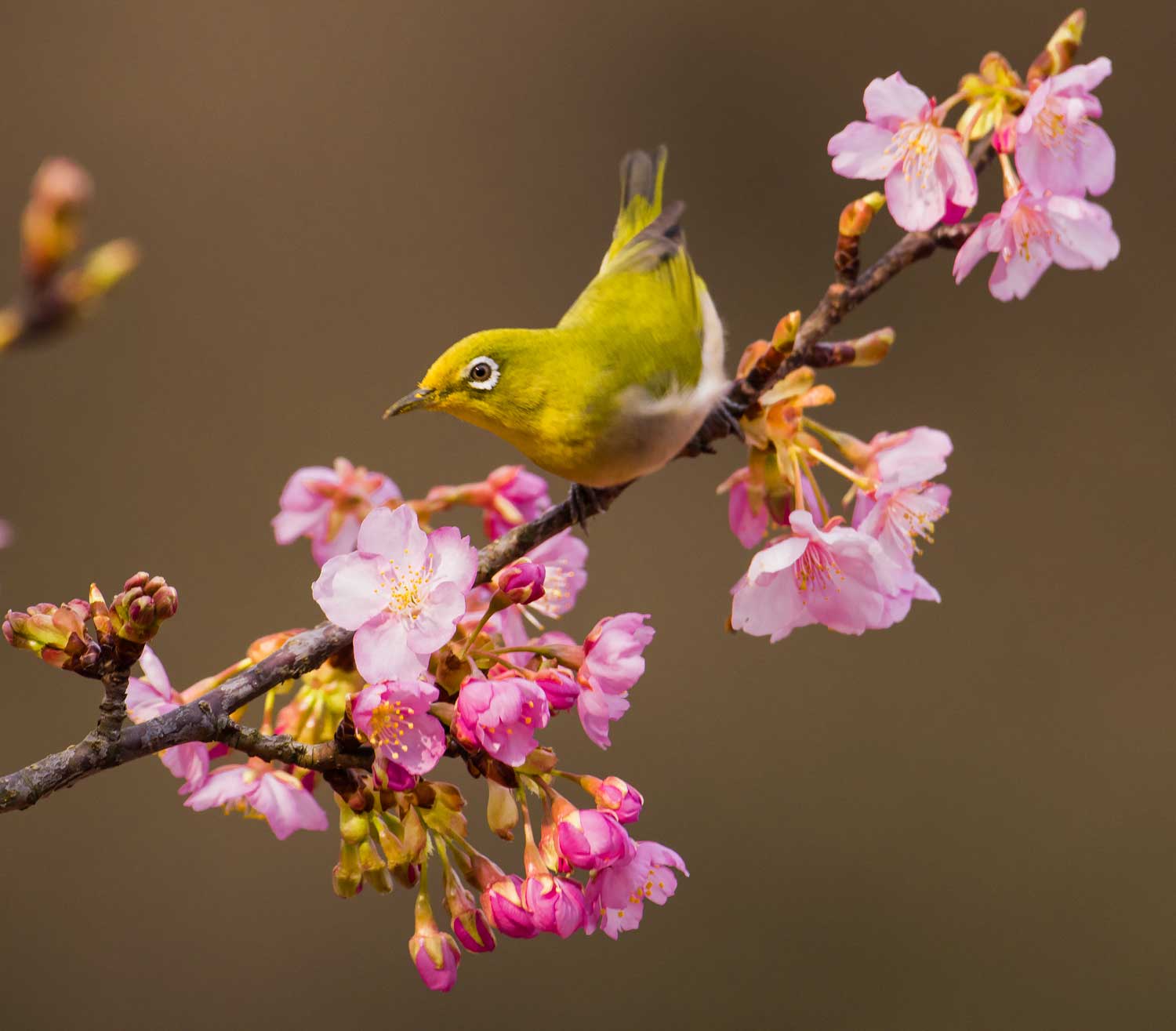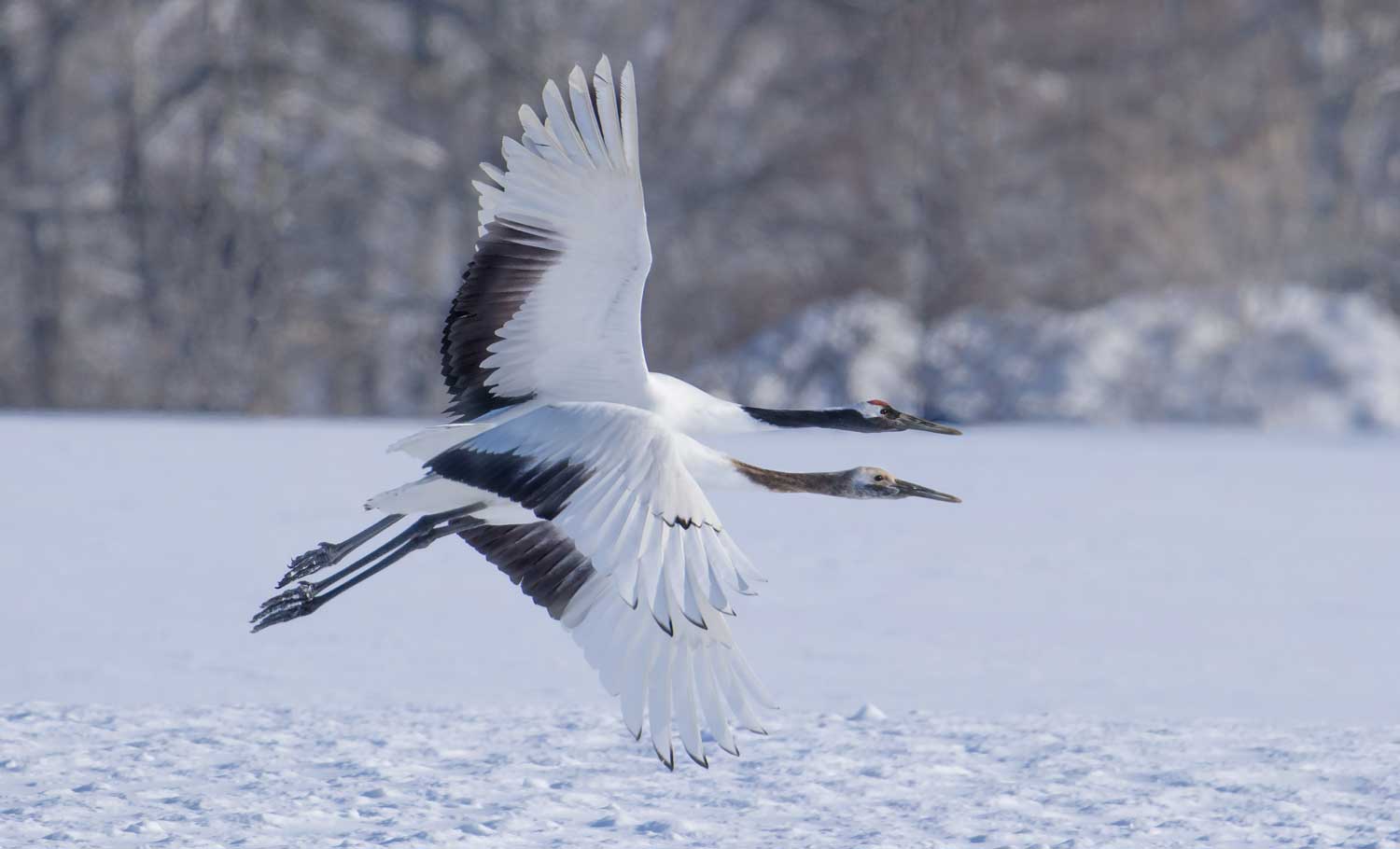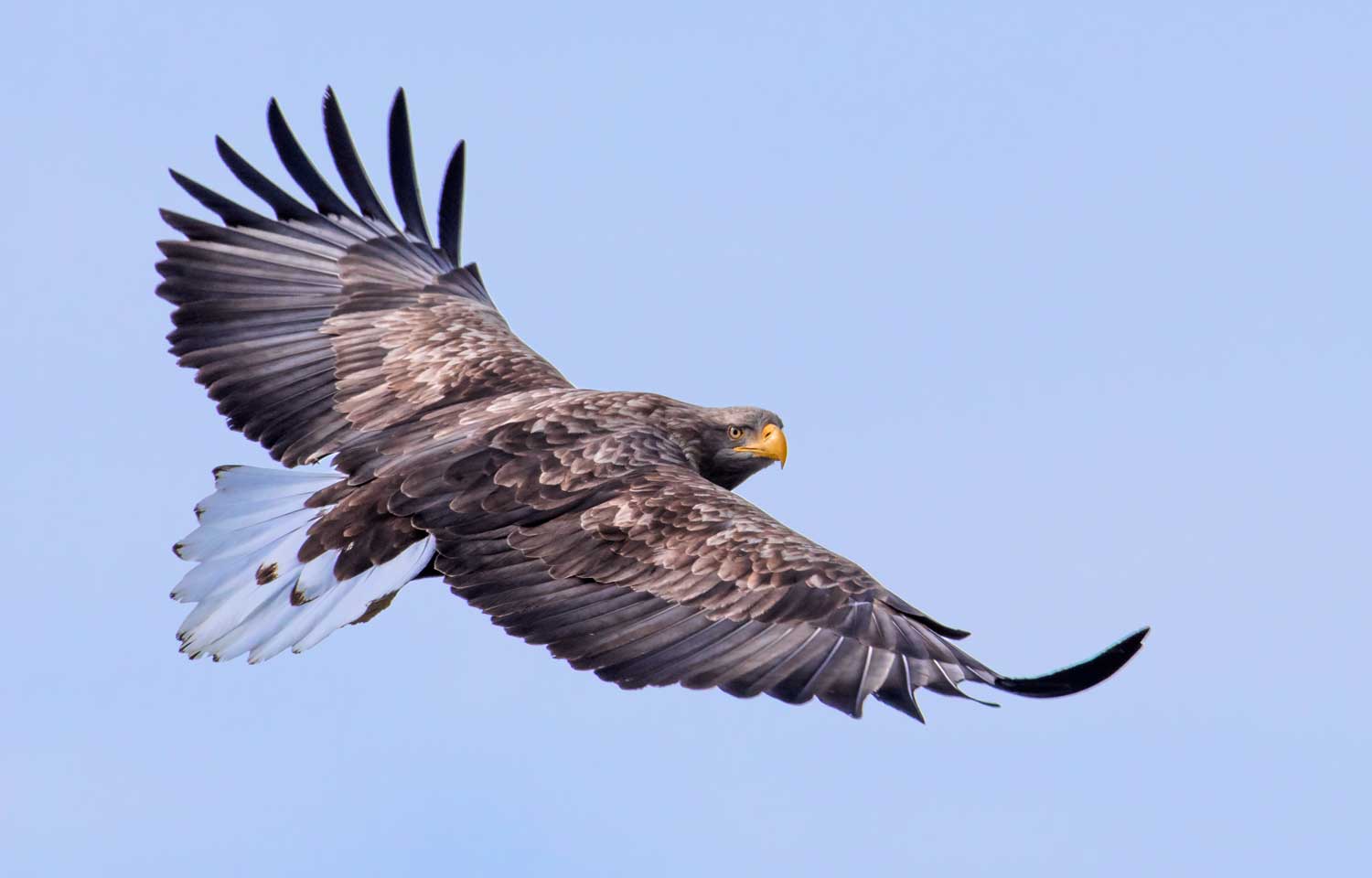 Well maybe not any bird such as the small Japanese White Eye known in Japan as the Mejiro. The Mejiro is jittery and definitely not a big fan of people; they are also extremely fast, especially when enjoying the nourishment of fresh sweet cherry blossom nectar.
Well maybe not any bird such as the small Japanese White Eye known in Japan as the Mejiro. The Mejiro is jittery and definitely not a big fan of people; they are also extremely fast, especially when enjoying the nourishment of fresh sweet cherry blossom nectar.  Annually I lead photographers on a photo tour Japan private birding spring adventure. Our goal is the elusive Japanese white-eye naturally found in Japan, Korea, Taiwan, and eastern China, also in the northern Philippines. Migratory populations of the birds winter in Mainan Island, Burma, Vietnam and can found on many of the smaller islands in these areas; the cherry blossoms are most common in Japan but can be found in China and Korea. The white-eye is widespread, and a common bird in Japan considered one of the more dominant bird species.
Annually I lead photographers on a photo tour Japan private birding spring adventure. Our goal is the elusive Japanese white-eye naturally found in Japan, Korea, Taiwan, and eastern China, also in the northern Philippines. Migratory populations of the birds winter in Mainan Island, Burma, Vietnam and can found on many of the smaller islands in these areas; the cherry blossoms are most common in Japan but can be found in China and Korea. The white-eye is widespread, and a common bird in Japan considered one of the more dominant bird species. Birding in Winter, I focus my attention on our most northern Island of Japan for a Hokkaido photo tour winter wildlife and landscape extreme adventure in the wild frontier. Our main birding events are photographing the Red-crowned crane and Steller's sea eagle both large birds. The red-crowned crane is among the largest of the crane species, measuring about 150 to 160 cm (4ft 9in - 5ft 2in) tall, with a huge wingspan measuring 220-280 cm (7ft 3in - 9ft 2in).
Birding in Winter, I focus my attention on our most northern Island of Japan for a Hokkaido photo tour winter wildlife and landscape extreme adventure in the wild frontier. Our main birding events are photographing the Red-crowned crane and Steller's sea eagle both large birds. The red-crowned crane is among the largest of the crane species, measuring about 150 to 160 cm (4ft 9in - 5ft 2in) tall, with a huge wingspan measuring 220-280 cm (7ft 3in - 9ft 2in).  The Steller's sea eagle is in the top 3 fiercest eagles on our planet and measures about 85cm - 110 cm (2ft 7in - 3ft 6in) with a wingspan of 182 to 260 cm (5ft 9in - 8ft 5in).
The Steller's sea eagle is in the top 3 fiercest eagles on our planet and measures about 85cm - 110 cm (2ft 7in - 3ft 6in) with a wingspan of 182 to 260 cm (5ft 9in - 8ft 5in).
 Both small and large fast and slow wildlife require the proper skill set and gear to photograph them while in movement and flight successfully.
Both small and large fast and slow wildlife require the proper skill set and gear to photograph them while in movement and flight successfully. Gear you will need is a telephoto lens a decent camera and in most cases a steady tripod. Techniques and camera setting is paramount to photograph wildlife successfully. For tack-sharp wildlife shots in the ideal lighting require an f-stop of f11 with a high ISO, and you will need a shutter speed of at least 1/1600 of a second, but I prefer 1/2,500 - 1/4000 of a second depending on my bird species I am filming. In low lighting situations, you will not be able to achieve f8 - f11 you will have to shot wide open. Continuous shooting mode is a must and the faster the camera the better; I sure am happy it is the digital age I can still remember carrying a hundred rolls of film or more for a birding photo tour.
Gear you will need is a telephoto lens a decent camera and in most cases a steady tripod. Techniques and camera setting is paramount to photograph wildlife successfully. For tack-sharp wildlife shots in the ideal lighting require an f-stop of f11 with a high ISO, and you will need a shutter speed of at least 1/1600 of a second, but I prefer 1/2,500 - 1/4000 of a second depending on my bird species I am filming. In low lighting situations, you will not be able to achieve f8 - f11 you will have to shot wide open. Continuous shooting mode is a must and the faster the camera the better; I sure am happy it is the digital age I can still remember carrying a hundred rolls of film or more for a birding photo tour.
Leave a comment
0 Comments